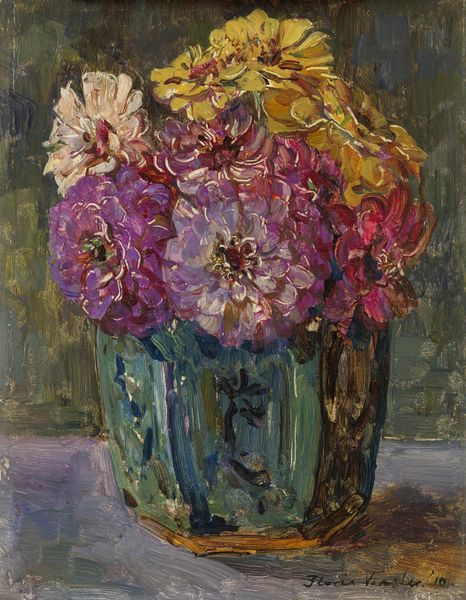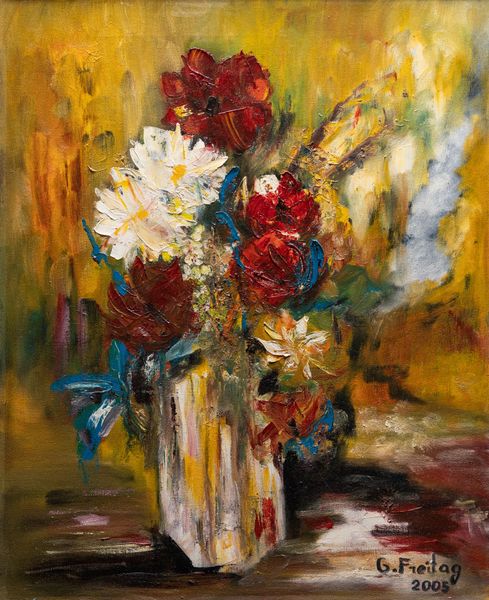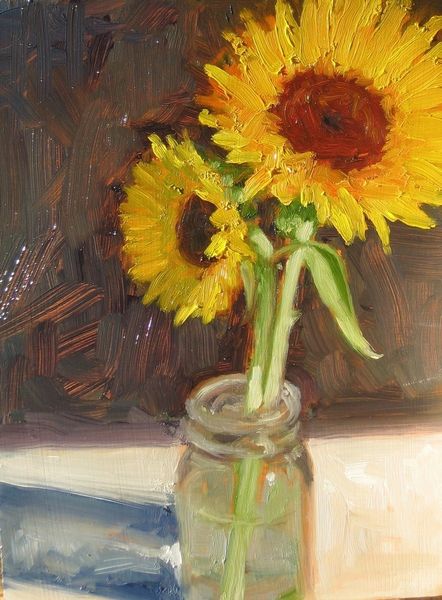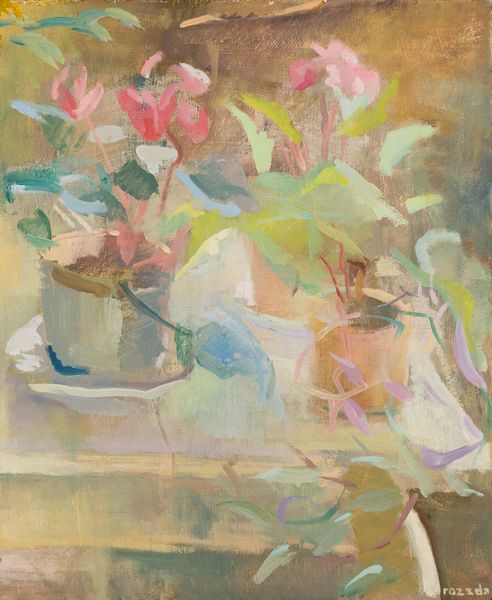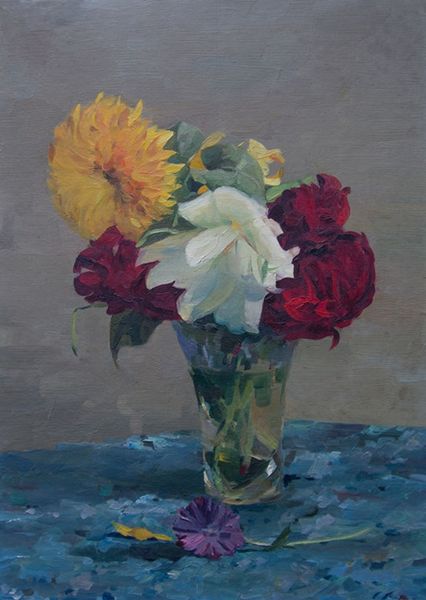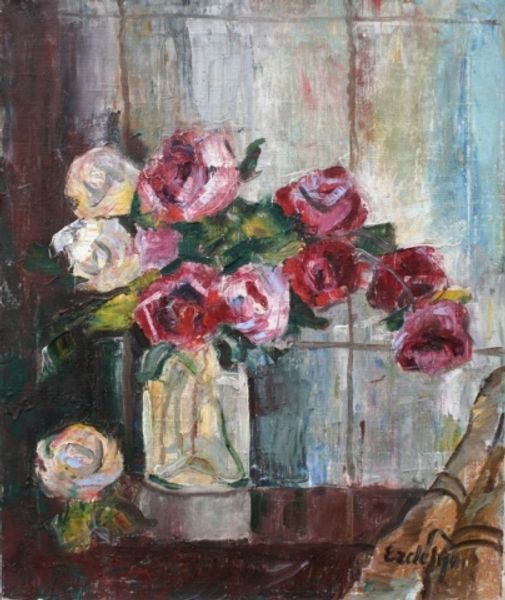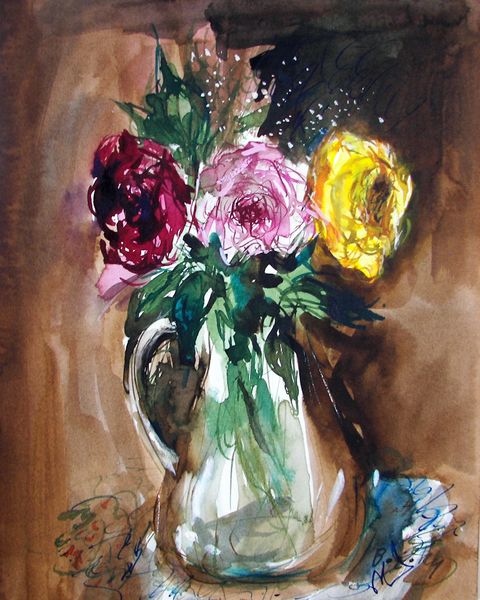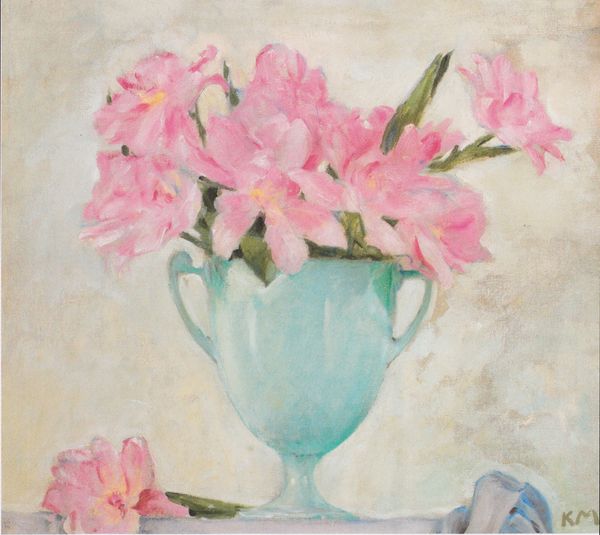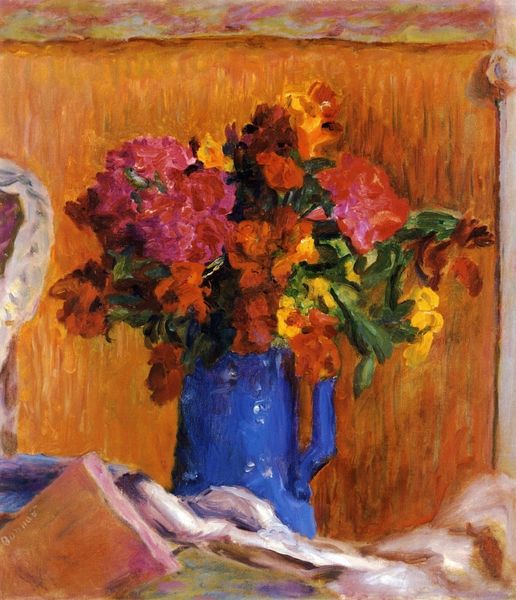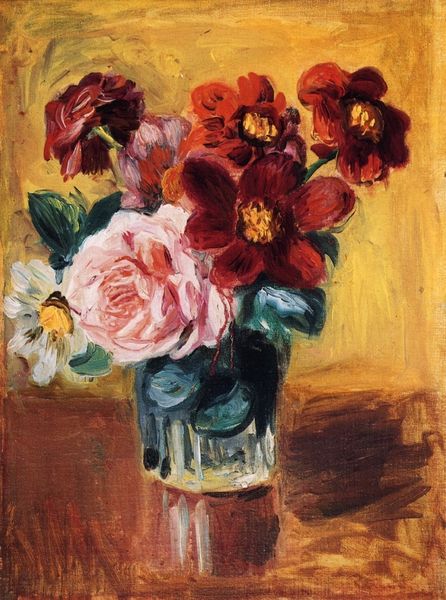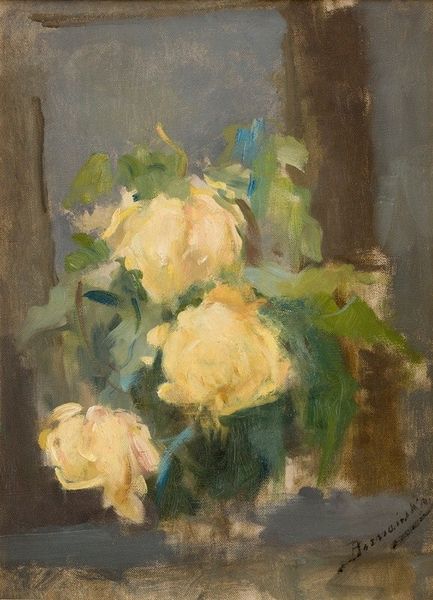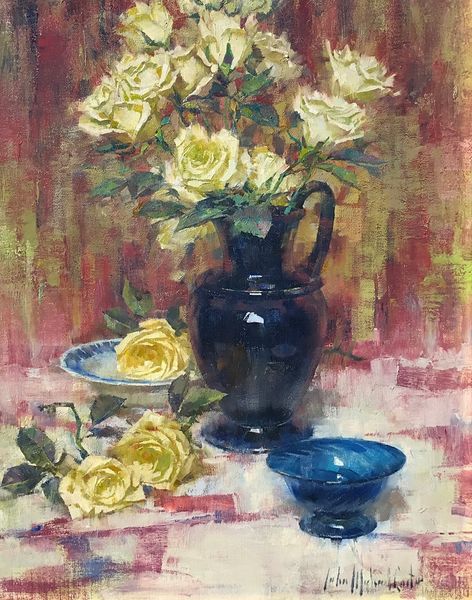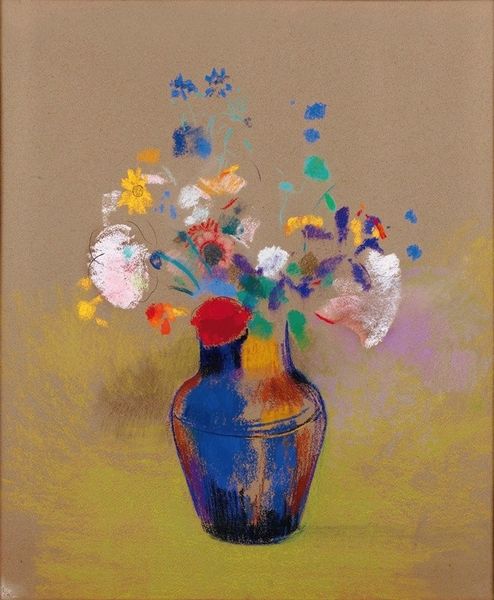
drawing, print, gouache
#
drawing
# print
#
gouache
#
possibly oil pastel
#
handmade artwork painting
#
oil painting
#
fluid art
#
acrylic on canvas
#
underpainting
#
water
#
united-states
#
painting painterly
#
watercolour bleed
#
watercolour illustration
#
watercolor
Dimensions: 665 × 560 mm
Copyright: Public Domain
Curator: This painting is titled "Flowers," created by Julian Alden Weir in 1880. You can find this pastel and gouache work over in Gallery 226. What's your first impression? Editor: It's quite dreamlike. The colors are so soft, and everything seems to blend together. There's a nostalgic air about it. Like a memory fading gently around the edges. Curator: That’s interesting, especially if you consider Weir's place in American Impressionism. He's part of a generation seeking to capture fleeting moments and sensory impressions. I’d argue the looseness and sketch-like nature, might suggest the passing of time. Editor: Absolutely! And the vessels holding the flowers seem deliberately chosen. The contrast between the stark white one, teeming with bright yellow daffodils, and the moody greyish-green one that the pink roses inhabit. Are these vessels indicative of Weir’s attitude to capturing nature and how the location of objects affects the reception? Curator: Exactly! The positioning within domestic objects in the piece creates a narrative about control, possession and intimacy and Weir asks these questions from his audience. How complicit we are in altering or domesticating even what we call beauty. Do you notice how he also makes use of his negative space in this painting? The pale ground enhances the other more pigmented sections, giving more of an ethereal and airy feel. Editor: Yes, definitely! The light feels as crucial as the color. It creates a balance in such an unassuming manner and I wonder what the artist was attempting to convey. He's really making a political statement when depicting floral arrangement from a subjective lens in American art history, since the tradition was usually hyper-objective. He shows us, instead, the transience and subjectivity involved in beauty. Curator: Absolutely! These fleeting details ask us about our consumption habits of things considered to be innately "beautiful". Well, it's always a pleasure exploring art with you, and the dialogue with the audiences is what Weir's intention might have been to accomplish from his vantage. Editor: Indeed. It leaves one with much to contemplate long after we move on. Thanks.
Comments
No comments
Be the first to comment and join the conversation on the ultimate creative platform.
